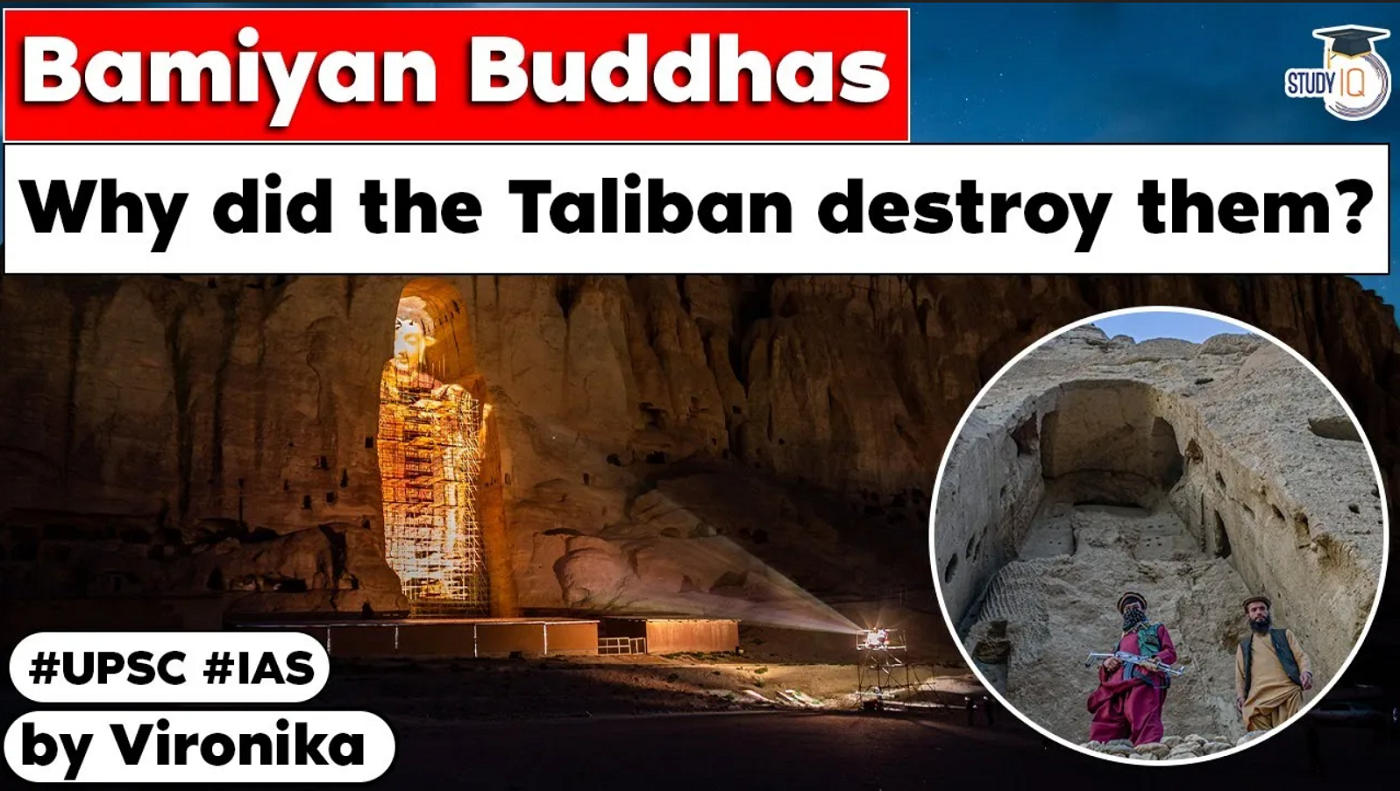Table of Contents
- The Taliban regime in Afghanistan has said it would protect the ancient Buddha statues in Mes Aynak, also the site of a copper mine where the Taliban are hoping for Chinese investment.
- The Taliban’s position is in marked contrast to the time they ruled Afghanistan earlier, when, in the face of global outrage, they brought down the centuries-old Buddha statues in Bamiyan using artillery, explosives, and rockets.
Reason for the change
- The apparent change of heart over the Mes Aynak statues seems to be driven by economic interests, with the regime in desperate need of the income Chinese investment in the copper mines could generate.
- Hakumullah Mubariz, the Taliban head of security at Mes Aynak, told the Associated Press,
- “Protecting them is very important to us and the Chinese.”
The ancient Bamiyan Buddhas
- The Bamiyan valley, in the Hindu Kush mountains and along the river Bamiyan, was a key node of the early Silk Routes, emerging as a hub of both commercial and cultural exchange.
Significance of the Bamiyan
- According to UNESCO, the “rise of Bamiyan was closely connected with spread of Buddhism across Central Asia, and that in turn was linked to the political and economic currents of that time.
- Early in the first century AD, a semi-nomadic tribe called the Kushans swept out of Bactria.
- The Kushans made themselves the unavoidable middlemen between China, India and Rome, and prospered on the revenues of the Silk Road.
- In so doing, they fostered a syncretic culture, in which tribal traditions from Central Asia fused with artistic conventions derived from the Hellenized Mediterranean and with the ideologies coming from Buddhist India, as reflected in the remarkable cultural legacy to be found in Bamiyan.”
- The Bamiyan Buddha statues, hewn from sandstone cliffs, are said to have dated back to the 5th century AD, and were once the tallest standing Buddhas in the world.
- In their Roman draperies and with two different mudras, the statues were great examples of a confluence of Gupta, Sassanian and Hellenistic artistic styles.
- Called Salsal and Shamama by the locals, they rose to heights of 55 and 38 metres respectively. Salsal means “light shines through the universe”, while Shamama is “Queen Mother”.
Razing by the Taliban
- The Taliban first announced their intention to destroy the statues on February 27, 2001.
- The declaration was met with condemnation and outrage, with then Pakistan President Pervez Musharraf among those who voiced concern.
- India offered to arrange for a transfer and safeguarding of the artefacts.
- On March 2, 2001, the destruction started with guns. It took a month for the process to be completed, with the use of weaponry scaled up continuously.
- According to the report in The Atlantic, “when the Buddhas finally crumbled, Taliban fighters were firing weapons into the air, they were dancing and they brought nine cows to slaughter as a sacrifice.”
After the destruction
- In 2003, UNESCO included the remains of the Bamiyan Buddhas in its list of world heritage sites.
- It was proposed that the statues should be reconstructed with the pieces that were still available, and restored in their niches, but it was met with opposition.
- To mark 20 years of their destruction, on March 9, 2021, the statue of Salsal was “recreated” — a 3D projection was beamed at the alcove where it had stood.
- “We do not want people to forget what a horrific crime was committed here,” Zahra Hussaini, co-organiser of the “A night with Buddha” event, was then quoted by BBC as saying.
Mes Aynak
- The Mes Aynak Logar copper project is located in a barren region of Afghanistan’s Logar Province, some 40 kilometers from Kabul.
- According to Afghanistan’s Ministry of Mines and Petroleum, the site is home to the world’s second-largest copper deposit, reportedly representing estimated reserves of some 5.5 million tonnes of high-grade copper ore (Mes Aynak means “little source of copper” in Pashto).
- However, the site is also home to one of the world’s most significant archeological excavations: the ancient settlement of Mes Aynak, once a city on the fabled Silk Road network of trade routes that facilitated the exchange of commodities, cultures, and spiritual traditions across the ancient world.
- It includes more than 400 Buddhist statues, stupas, and a 40-hectare monastery complex, along with forts and a citadel spread over 19 separate archaeological sites.


Question:
In which mudra did Gautam Buddha deliver his first sermon at Sarnath?
[A] Dharmachakra Mudra
[B] Abhaya Mudra
[C] Dhyana Mudra
[D] Bhumisparsa Mudra
Latest Burning Issues | Free PDF






























 WhatsApp
WhatsApp